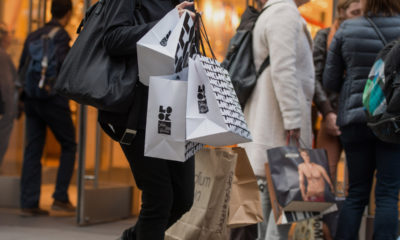Stock markets are off to a bad start on Monday as investors question whether the recovery trade has gone too far.
Last week brought an end to the late summer winning streak that saw stock markets recover a significant – and some would argue overly so – portion of the losses endured this year. And it seems that has set the tone going into this week, with Asia and Europe posting losses of more than 1% and US futures pointing to a similar open.
Naturally, all eyes are on Jackson Hole later in the week and in particular, the appearance of Fed Chair Jerome Powell. This platform has in the past been used to make significant announcements and so every year, traders are left on the edge of their seats in case of another this time around.
This year could be an anticlimax on that front as the Fed’s message has been clear since it pivoted to a data-driven approach in July. The markets viewed this as a dovish pivot and policymakers have since pushed back, not helped by the softer inflation data that further fueled the speculation.
With that in mind, the expectation is still that Powell will reaffirm what he and his colleagues have been saying in public recently, without giving too much away ahead of the September meeting, before which we’ll get another inflation and jobs report. The risk is that he says something dovish – intentionally or otherwise – after investors position for the opposite and triggers another risk-on rally in the markets.
European gas surges amid new maintenance plans
Further knocking sentiment in the markets this morning are reports of Nord Stream 1 being shut down again for maintenance later this month. The three-day pause will once again raise fears that the Kremlin will weaponise gas supplies and use the maintenance as an excuse not to resume flows. With storage still below where the EU wants going into the winter, that means a greater risk of shortages and much higher prices, as we’re already seeing this morning with European gas trading up more than 15%.
China rate cut targeted but likely not enough
Meanwhile, China cut its one and five-year loan prime rates on Monday, a move that was expected given the cuts to the reverse repo and MLF rates last week. The composition of the cuts was not quite as expected though, with the one-year cut by only five basis points to 3.65% and the five-year cut by 15bps to 4.3%. This suggests it was very much a move targeted at the ailing property market amid developer struggles and mortgage boycotts.
The problem is that the damage to the property market on top of Covid lockdowns has hit confidence and this cut is unlikely to stimulate demand. Whether the PBOC is up to doing more given the global inflation backdrop isn’t clear.
Oil choppy as traders await JCPOA decision
Oil prices are off more than 1% this morning as choppy trade continues. There remain many factors influencing the oil price right now from a tight market to a diminishing growth outlook and a potential Iran nuclear deal. The prospects for the latter could become clearer over the course of this week although that has been suggested many times this year and yet here we are. We could see WTI remain choppy around $90 and Brent hover above $92 for a little while longer yet.
Gold pushed back further but faces a big test of support
Gold remains on the backfoot amid a resurgent dollar as 10-year Treasuries continue to creep back towards 3% and the two-year hovers around its June highs. Traders are naturally looking for clarity from Powell’s Jackson Hole appearance later this week and seem to think it’s going to come in the form of hawkish warnings. That has dampened sentiment in the yellow metal which has been further pushed back from its recent peak above $1,800 and now trades around the 61.8% retracement level from its July lows to August highs. A good test for overall sentiment in gold.
Bitcoin vulnerable ahead of Powell’s appearance
Bitcoin had a terrible end to last week, falling almost 10% before almost reaching $20,000 over the weekend. Sentiment was looking fragile going into the session, with rallies seeing weakening momentum on approach to $25,000 but a sudden sharp drop of that magnitude still came as quite the surprise. The fact that it’s struggled to recoup much of those losses doesn’t bode well either. The crypto community may well be hoping for a favour from Jerome Powell later this week, with bitcoin looking vulnerable around $20,000 once more.

 Forex2 weeks ago
Forex2 weeks ago


 Naira2 weeks ago
Naira2 weeks ago
 Billionaire Watch2 weeks ago
Billionaire Watch2 weeks ago




 Naira2 weeks ago
Naira2 weeks ago




 Naira2 weeks ago
Naira2 weeks ago




 Naira4 weeks ago
Naira4 weeks ago


 Naira6 days ago
Naira6 days ago
 Banking Sector4 weeks ago
Banking Sector4 weeks ago






















